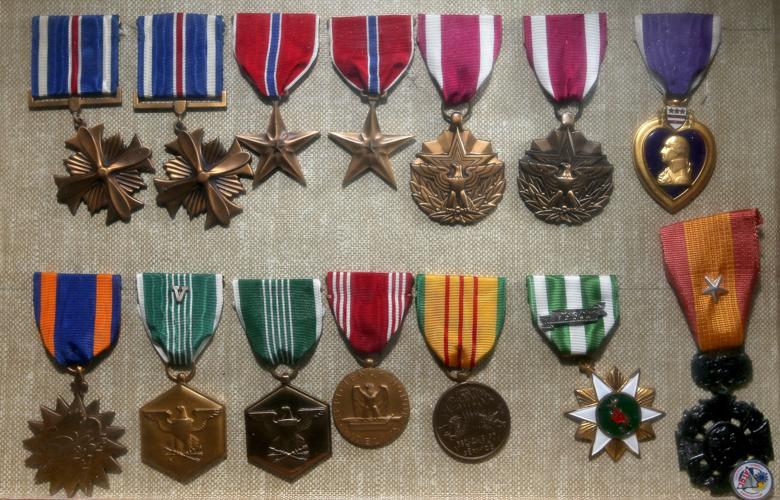Like many veterans who served in war, looking back can sometimes be tough for Harry Connors.
“I dislike reading this because I see that of the 36 people I served with, only two of us made it out alive,” Connors said as he thumbed through a pocket-sized diary he kept during his time in Vietnam.
Connors twice served in Vietnam, first in 1967 and 1968 and later in 1972 and 1973. His Army career spanned 21 years.
He flew helicopters in Vietnam, running transport missions and recovering wounded and stranded servicemen from the field.
But he also flew even riskier missions, like piloting helicopters just above ridgelines and tree lines to scout enemy positions.
On one mission, flying his bird just feet above the ground into a clearing, he came face to face with a Viet Cong soldier holding a bowl of water in his hands with a machine gun strapped across his back.
“He threw his water bowl up and reached for the machine gun on his back,” Connors said. Out of options, Connors pushed on the stick and plowed the helicopter’s skid into the enemy fighter.
Another time, Connors said, four helicopters he piloted over the course of one day were struck with enemy fire. In one instance, he was forced to make a running landing on a foamed runway.
“Helicopters can take quite a beating, but they’re no match for a 37 millimeter (anti-aircraft gun),” Connors said.
Pilots used to fly 18 or 20 hour days back then, he said. Flying a few recovery missions, his helicopters took repeated fire. He was lucky to make it out alive.
His luck nearly ran out in a battle in 1968.
Connors and other Americans, along with a group of Vietnamese mercenaries, were on an intelligence-gathering mission in the mountains outside of Dien Bien Phu, in the northwestern reaches of North Vietnam when fighting with the North Vietnamese army broke out.
 |
Despite being shot in the leg and arm, Connors and the team fought on for a day and a half.
“The only thing I can think of is we fell asleep because we were exhausted,” Connors said.
Special operations forces came to their rescue, Connors said, noting he and all 12 members of the team were shot multiple times. He was taken to Japan to recover.
In 1972, he returned to help train South Vietnamese forces.
Later he worked in foreign service in Europe and other parts of the world.
Connors’ wife, Heide, originally from Germany, said the couple spent nearly eight years apart during his two-decade military career.
At the time of his retirement as a major, Connors was up for promotion — but his wife wasn’t having it. “I didn’t want to be a colonel’s wife,” she said, noting the travel and time away from home that would have been required.
Instead, Connors became a civilian government affairs adviser.
Over his career, Connors earned dozens of medals and distinctions, including the Purple Heart.
He and his wife retired to Tucson in 2013.





